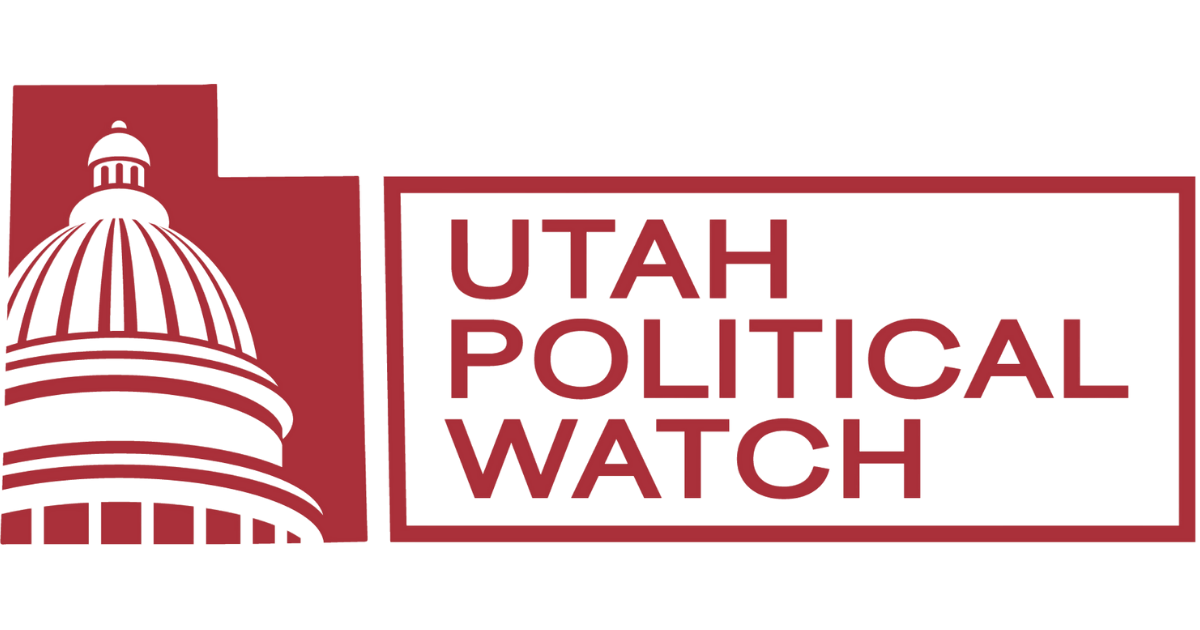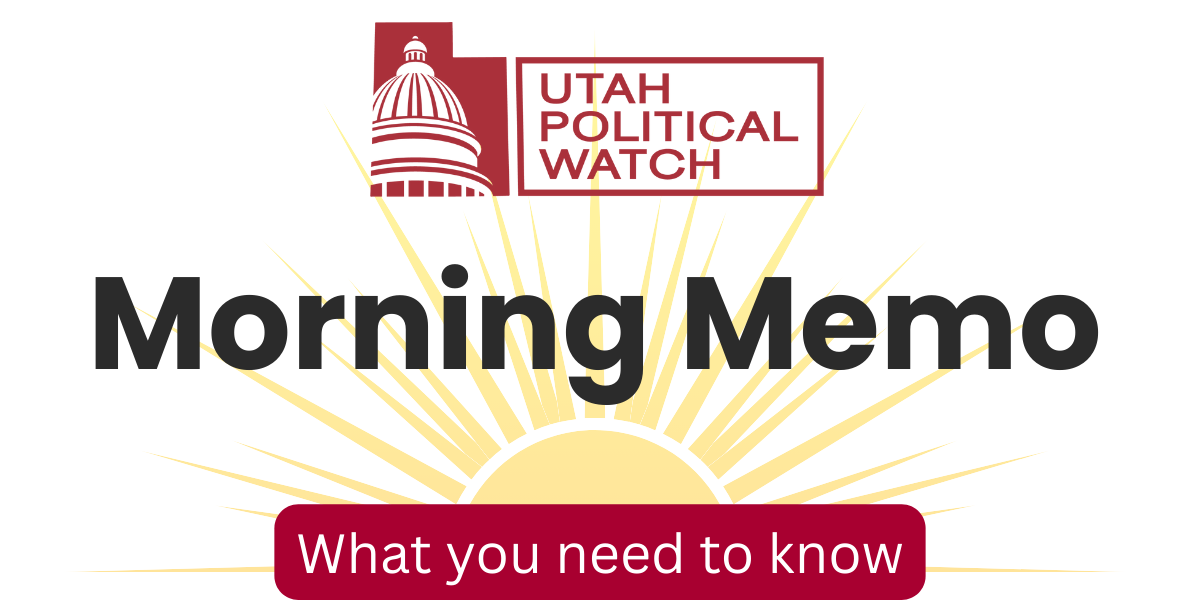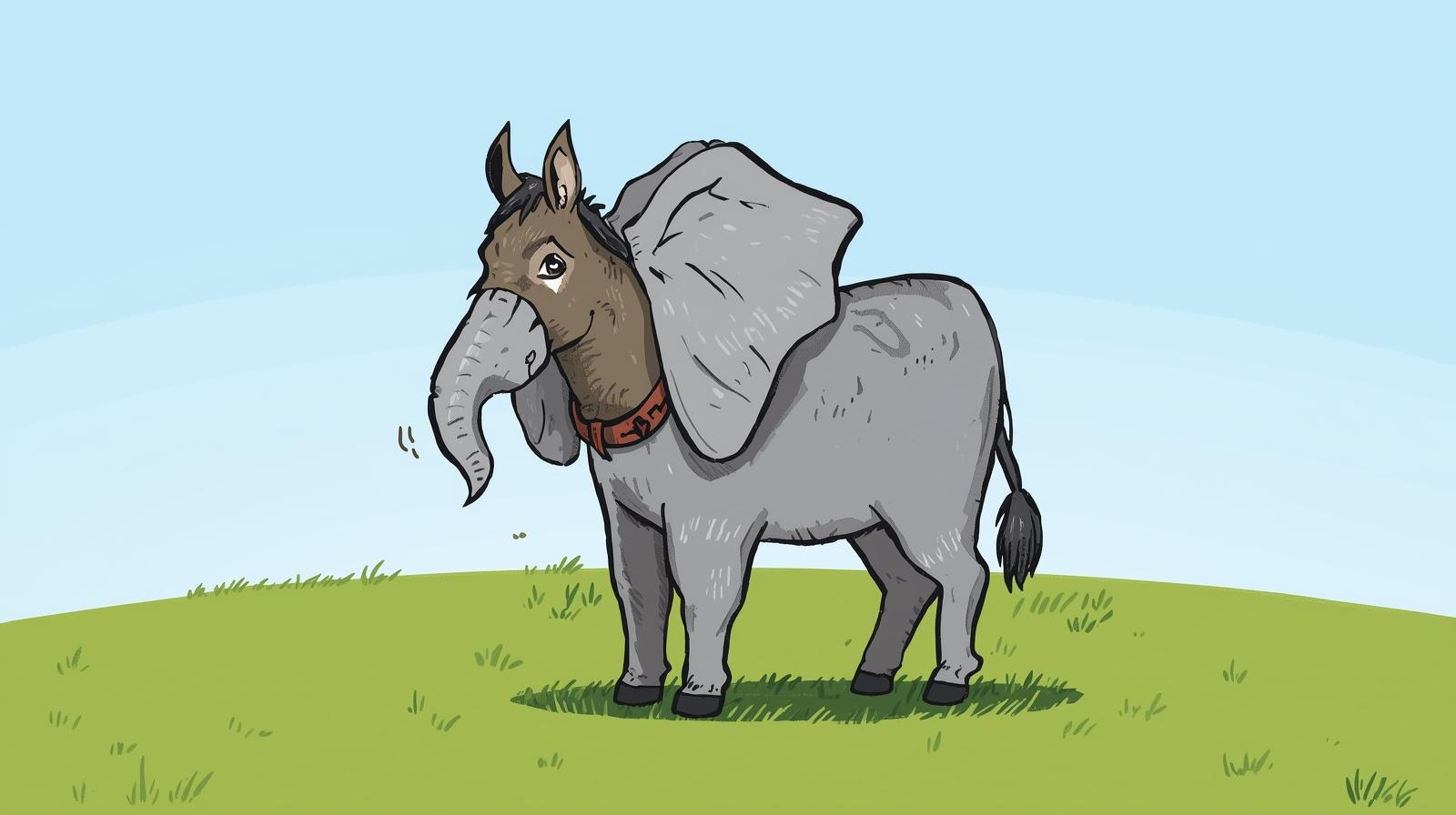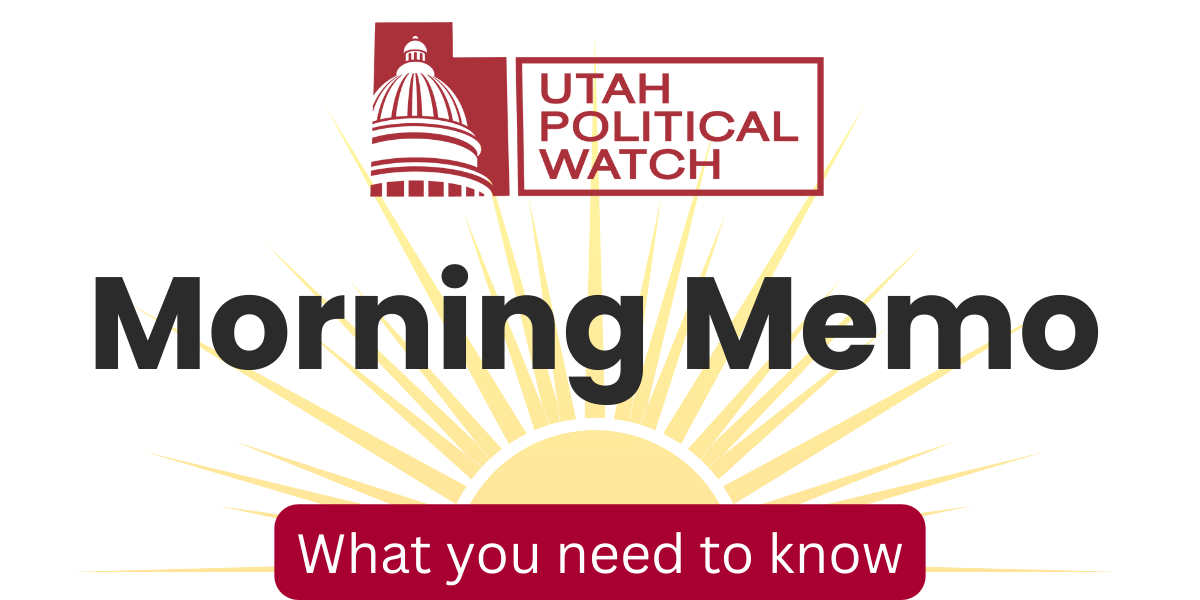Utah Republican lawmakers have preached the gospel of avoiding partisan considerations as they prepare to vote on a new congressional map next week. At the same time, the Utah Republican Party has launched a coordinated push for the most GOP-friendly congressional map on the table—one that could preserve their lock on all four of the state’s seats in Congress.
The playing field for Utah’s unusual mid-decade redistricting process is shaped by Proposition 4, the voter-approved anti-gerrymandering initiative that set strict redistricting standards: equal population distribution, minimal splitting of communities. Most importantly, Prop. 4 banned the drawing of maps to favor any political party. These rules now bind lawmakers after a judge invalidated their attempt to sidestep voter wishes by unconstitutionally repealing Prop. 4 in 2020.
In public meetings, Republican lawmakers have gone out of their way to maintain a strict facade of political neutrality. Sen. Scott Sandall, co-chair of the legislature’s Redistricting Committee, has repeatedly slapped down any discussion that contained the slightest whiff of partisanship.
While lawmakers can’t discuss partisan information when drawing the maps, there’s nothing in the law about political parties. And while the Utah GOP’s first choice would probably be to keep the 2021 congressional map in place because it all but guarantees a Republican victory in the state’s four congressional districts, they’ve landed on a new map they think gives them the greatest partisan advantage.
On Tuesday night, the party sent an email urging members to flood the legislature’s redistricting website with comments supporting the map labeled “Option C.”
“Outside groups are seizing this opportunity for a ‘blue takeover’ that would fundamentally change Utah’s voice in Washington,” the email read.
“This is the only map proposed that contains the redistricting criteria and legislative boundaries needed to stop the Democrats.”
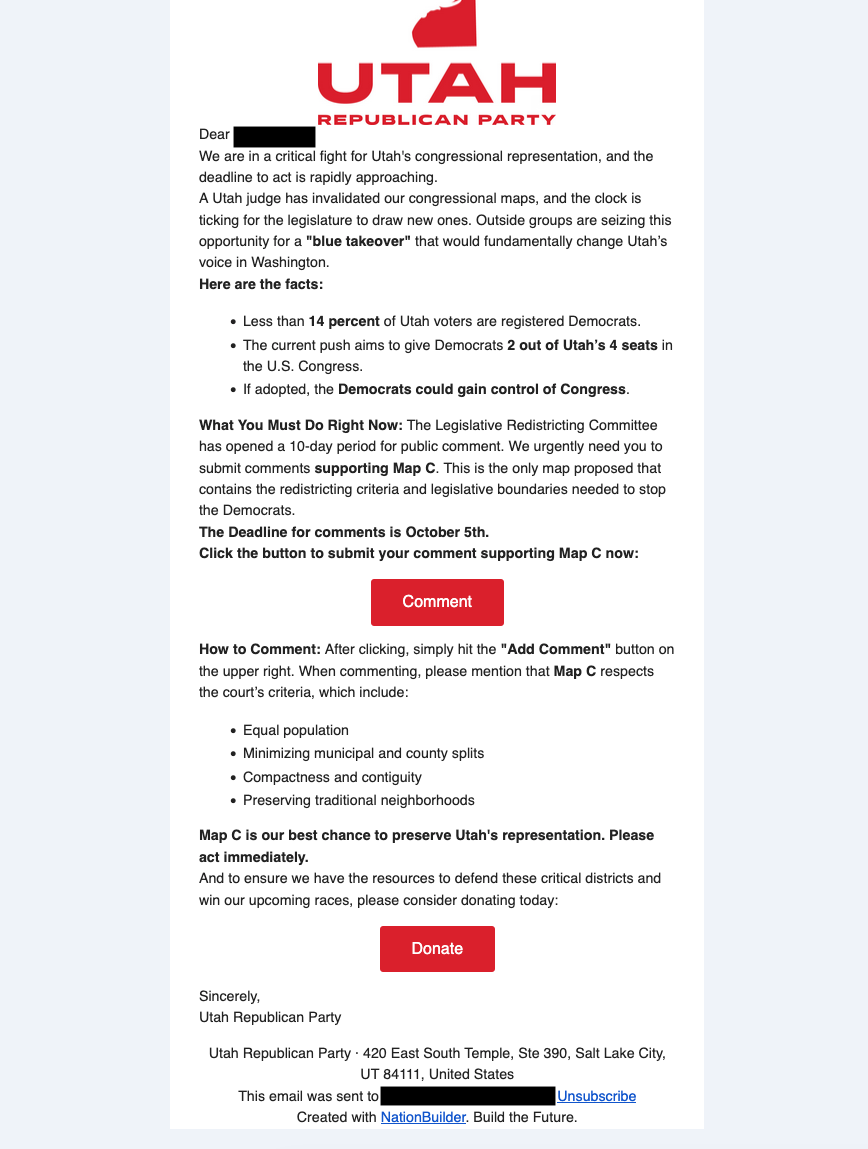
The email offers talking points about how the map satisfies the criteria set by the court, including equal population, minimizing the splitting up of cities and counties, and preserving traditional neighborhoods.
As of Wednesday morning, several comments left on Option C parroted or mirrored the talking points in the GOP email.
Utah GOP chairman Rob Axson did not respond to a request for comment.
In a press release, Utah Democratic Chair Brian King slammed the Republican effort, characterizing it as “putting their finger on the scale to preserve power.”
“For weeks, Republican members of the redistricting committee have lectured Utahns about avoiding partisan commentary and keeping politics out of the process. Meanwhile, their own party is flooding inboxes with instructions on which map to support—because it’s the least competitive—and defend it. The hypocrisy is stunning,” King said.
Among the five proposals, Option C seems to be the most Republican-friendly. It carves out two bulletproof Republican seats where Republican Donald Trump’s victory margins would exceed 20 points in both 2020 and 2024. The remaining two districts also tilt red, though by slimmer margins.
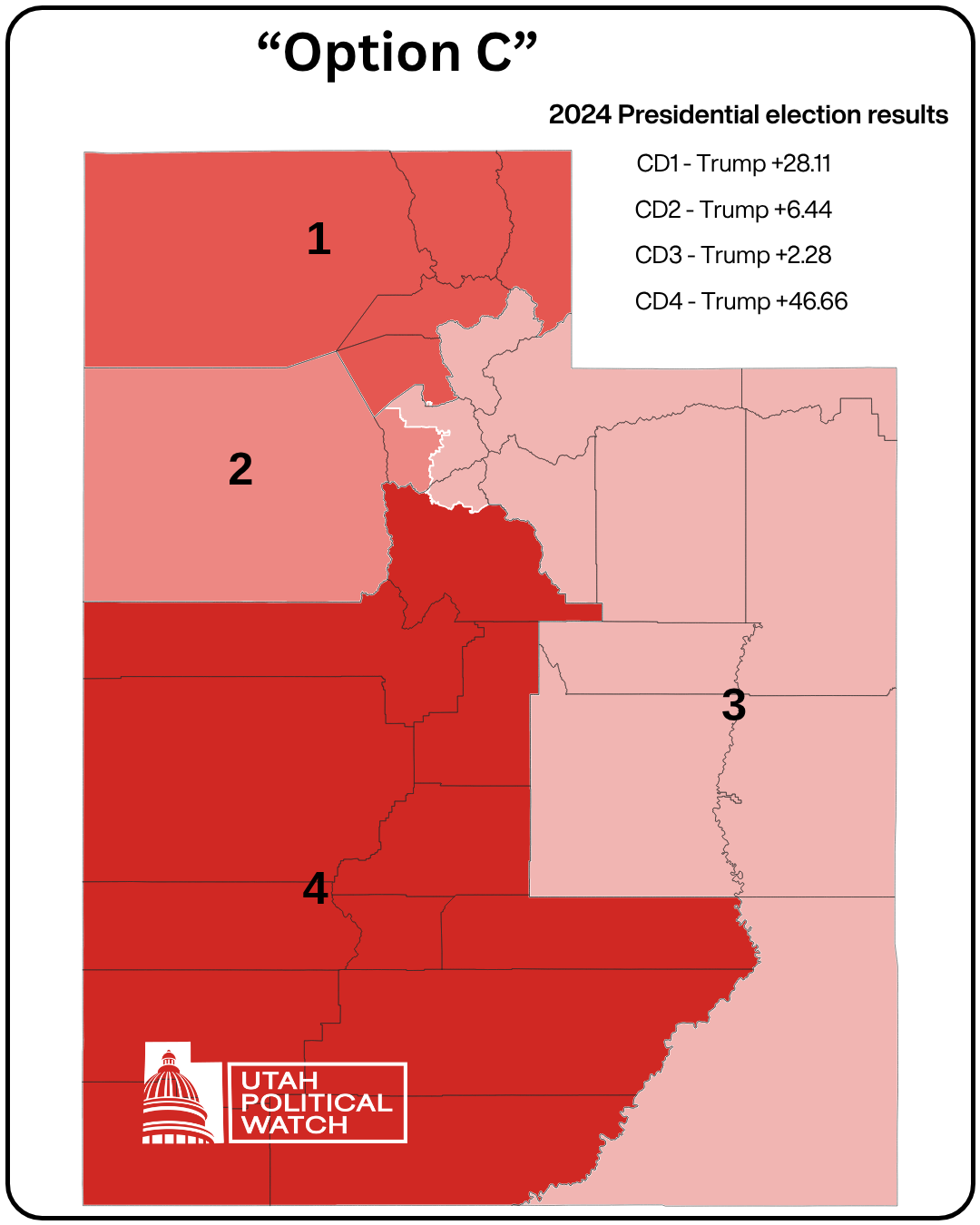
When the five maps proposed by legislative Republicans are analyzed for potential political bias, Option C just happens to be tilted toward Republicans the most.
Using Plan Score, a nonpartisan redistricting analysis tool, even the most "competitive" districts in Option C give Democrats just a 9% and 3% chance of victory against Republican incumbents. For comparison, every other proposed map includes at least one district where Democratic chances rise to between 21% and 31%—still an uphill battle, but potentially winnable.
One measure of partisan fairness in redistricting is known as the “efficiency gap”—essentially how many votes get “wasted” by each party. Option C produces an efficiency gap of 22.9% favoring Republicans, far beyond the 7% threshold experts consider an indication of potential gerrymandering. The other Republican-proposed maps, while all showing significant Republican advantages above 17%, don't tilt the playing field quite as dramatically as Option C.
Republican lawmakers are pushing their own measure of fairness. A proposed bill from Sen. Brady Brammer introduces a standard of “partisan symmetry” with a twist that could lock in a Republican advantage, preserving the status quo.
The concept sounds simple. If Republicans win 55% of seats with 55% of votes, Democrats should get the same results if the roles were reversed. However, the creators of this method have cautioned against using it in politically one-sided states like Utah.
Brammer’s bill goes one step further. It creates a complex formula based on recent statewide election results that would normalize Utah’s Republican dominance. Under this standard, all five proposed maps—including Option C—would be considered “fair” despite their pronounced Republican lean. Even the 2021 congressional map, which was thrown out by the courts, would likely pass Brammer’s test.
Lawmakers may consider Brammer’s bill during Monday’s scheduled special session, where they will also approve a final map proposal to submit to the court.
